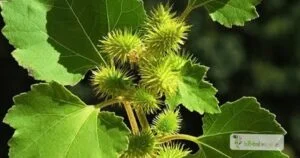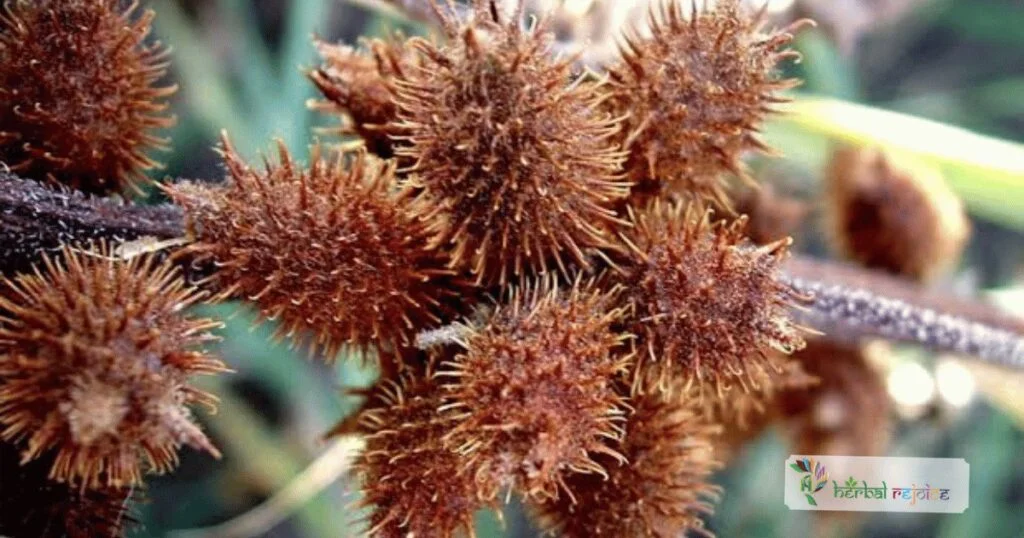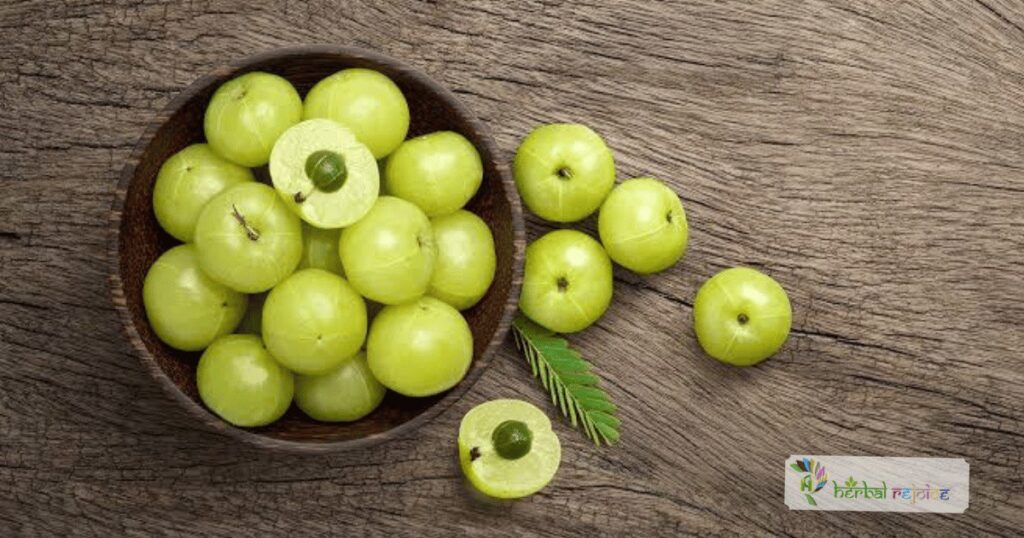Introduction
Xanthium strumarium Linn. is a plant commonly known as Cocklebur or Burweed. It belongs to the Compositae family and is found in tropical regions of India. In Ayurveda, it is known as Shankheshwara, Arishta, or Aartagala, while in Siddha and Tamil medicine, it is referred to as Maruloomatham or Marlumutta.
In folk medicine, it is called Bana-okraa. Cocklebur’s (xanthium strumarium) roots, leaves, and shoots are utilized for the treatment of leucoderma, ulcers, abscesses, venereal sores, herpes, and scrofula.
Properties of Cocklebur
The plant has been traditionally used for various purposes. The whole plant, including the roots, leaves, and shoots, have medicinal properties. It is used in the treatment of leucoderma, ulcers, abscesses, strumous and malignant diseases.
The root of Xanthium strumarium has been found to have antitumor properties. The leaves and shoots of the plant are applied externally on venereal sores, herpes, and scrofula.
Components of Cocklebur
Studies have shown that the leaves of Xanthium strumarium contain various compounds, including seaquiterpene lactones such as xanthinin, xanthumin, xanthanol, and iso-xanthanol.
Other compounds found in the leaves include isohexacosane, chlorobutanol, stearyl alcohol, beta-sitosterol, and palmitic acid. However, it is important to note that the plant also contains a highly toxic compound called carboxyatractyloside.
Key Constituents of Cocklebur
Beta-sitosterol glucoside, found in Xanthium strumarium, has anti-inflammatory properties. Xanthumin, another compound in the plant, acts as a central nervous system depressant.
An alcoholic solution of xanthinin has shown strong antibacterial activity against Gram-negative bacteria and fungi. Additionally, a cytotoxic compound called xanthatin has been discovered in the resin of the plant.

Potential Health Benefits of Cocklebur
The root of Xanthium spinosum Linn., also known as Spiny Clotbur, has diuretic, antiperiodic, sudorific, antidiarrheal, and styptic properties. This species, introduced from Europe into West Bengal and Assam, is used in the treatment of intermittent fevers.
Various xanthanolides have been isolated from the whole plant of Xanthium spinosum.
Certain sesquiterpene lactones found in Xanthium strumarium, such as xanthinin, solstitialin, and stizolicin, have demonstrated limited antitumor action in vitro. Xanthatin has also been isolated from the plant.
Conclusion
In conclusion, Xanthium strumarium Linn., commonly known as Cocklebur or Burweed, is a plant with various medicinal properties. Its roots, leaves, and shoots have been utilized for the treatment of leucoderma, ulcers, abscesses, venereal sores, herpes, and scrofula.
It contains compounds such as seaquiterpene lactones, beta-sitosterol glucoside, and xanthatin, which have antibacterial, anti-inflammatory, and antitumor properties. Xanthium spinosum Linn., a related species, is used as a diuretic, antiperiodic, sudorific, antidiarrheal, and styptic.
Frequently Asked Questions
What is Xanthium strumarium Linn. commonly known as?
Xanthium strumarium Linn. is commonly known as Cocklebur or Burweed.
What family does Xanthium strumarium belong to?
Xanthium strumarium belongs to the Compositae family.
In which regions of India is Xanthium strumarium found?
Xanthium strumarium is found in tropical regions of India.
What is Xanthium strumarium known as in Ayurveda?
In Ayurveda, Xanthium strumarium is known as Shankheshwara, Arishta, or Aartagala.
What is Xanthium strumarium referred to as in Siddha and Tamil medicine?
In Siddha and Tamil medicine, Xanthium strumarium is referred to as Maruloomatham or Marlumutta.
What is Xanthium strumarium called in folk medicine?
In folk medicine, Xanthium strumarium is called Bana-okraa.
What are the medicinal properties of Xanthium strumarium?
Xanthium strumarium has been used in the treatment of leucoderma, ulcers, abscesses, and strumous and malignant diseases.
Which part of Xanthium strumarium has been found to have antitumor properties?
The root of Xanthium strumarium has been found to have antitumor properties.
What are the external applications of Xanthium strumarium?
The leaves and shoots of Xanthium strumarium are applied externally on venereal sores, herpes, and scrofula.
What compounds are found in the leaves of Xanthium strumarium?
The leaves of Xanthium strumarium contain compounds such as xanthinin, xanthumin, xanthanol, and iso-xanthanol.
What is the significance of beta-sitosterol glucoside in Xanthium strumarium?
Beta-sitosterol glucoside, found in Xanthium strumarium, has anti-inflammatory properties.
What is the role of xanthumin in Xanthium strumarium?
Xanthumin, another compound in Xanthium strumarium, acts as a central nervous system depressant.
Does Xanthium strumarium have antibacterial activity?
An alcoholic solution of xanthinin, a compound in Xanthium strumarium, has shown strong antibacterial activity against Gram-negative bacteria and fungi.
Is there a toxic compound present in Xanthium strumarium?
Yes, Xanthium strumarium contains a highly toxic compound called carboxyatractyloside.
What are the medicinal properties of Xanthium spinosum Linn.?
Xanthium spinosum Linn., also known as Spiny Clotbur, has diuretic, antiperiodic, sudorific, antidiarrheal, and styptic properties.
Where is Xanthium spinosum Linn. introduced from?
Xanthium spinosum Linn. is introduced from Europe into West Bengal and Assam.
How is Xanthium spinosum Linn. used in traditional medicine?
Xanthium spinosum Linn. is used in the treatment of intermittent fevers in traditional medicine.
What compounds have been isolated from Xanthium spinosum?
Various xanthanolides have been isolated from the whole plant of Xanthium spinosum.
Do any compounds in Xanthium strumarium have antitumor action?
Certain sesquiterpene lactones found in Xanthium strumarium, such as xanthinin, solstitialin, and stizolicin, have demonstrated limited antitumor action in vitro.
Are there any cytotoxic compounds present in Xanthium strumarium?
A cytotoxic compound called xanthatin has been discovered in the resin of Xanthium strumarium.


